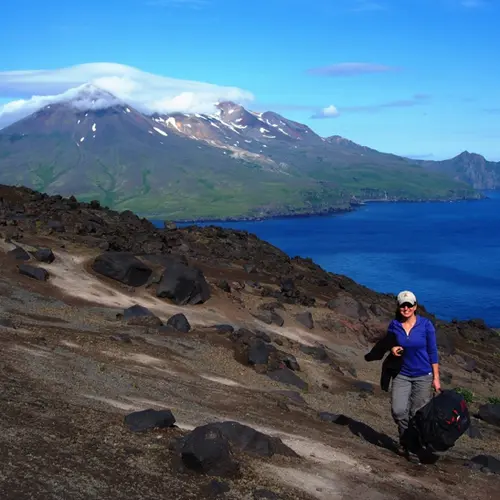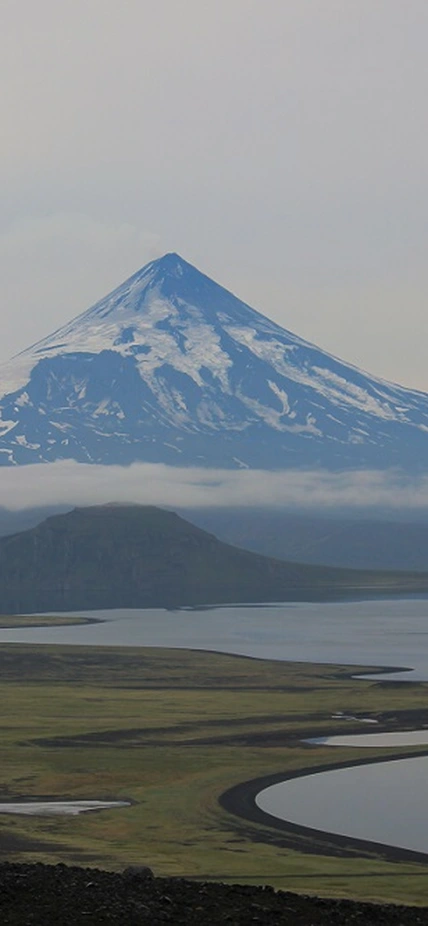Washington, DC—New work from a Smithsonian-led team, including Carnegie’s Diana Roman, revealed what could be the most-important factor controlling the depth at which magma is stored under a volcano, upending long-held theories about the molten material’s upward journey through the Earth’s crust. Their findings—which could inform the creation of detailed models that more accurately forecast volcanic eruptions—are published in Science.
“Dozens of volcanoes around the world are either actively erupting or existing in states of unrest right now, putting millions of people at risk,” Roman said. “Improving our ability to forecast eruptions of the world’s most common type of volcano would enable emergency managers to better prepare for evacuations and other response strategies.”
The researchers, including lead author Dan Rasmussen of the Smithsonian’s National Museum of Natural History and Roman’s frequent collaborator, Terry Plank of Columbia University’s Lamont-Doherty Earth Observatory, traveled by ship and helicopter to gain access to eight volcanoes in Alaska’s remote Aleutian Island chain.
The volcanoes the team studied are found at the intersection of two tectonic plates, where one plate is forced beneath the other. Called arc volcanoes, they are the planet’s most common type, and their numbers include the famous “Ring of Fire” that encircles the Pacific. This makes them an excellent research target for those interested in improving forecasting abilities.
The researchers collected ash looking for green crystals of a mineral called olivine that can trap tiny inclusions of material from the depths of a volcano’s plumbing system, revealing the chemical makeup of the magma at depth—particularly the amount of water it contains. These samples from the field were combined with previously published data from 56 additional volcanoes from around the world.
The researchers demonstrated that the more water a magma contains, the deeper in the Earth’s crust it is stored. This is important because water largely initiates and fuels eruptions in response to changes in the surrounding, especially pressure—not unlike how carbonation can make soda explode out of a shaken bottle when its opened.
The team contends that as magma rises through the Earth, the water mixed into it begins to form gas bubbles. As these bubbles release, the magma becomes more viscous, slowing its ascent. This contradicts previously held assertions that magma rises through cracks in the Earth’s crust because it is more buoyant than the surrounding material and continues upward until it reaches neutral buoyancy.
“These results move us closer to understanding the physics and conditions of magma storage beneath volcanoes, and that is an essential ingredient for the kinds of detailed physics-based models necessary to more accurately forecast eruptions,” Rasmussen concluded.
Looking ahead, the team says the next step is to move one link backward in the chain and determine what controls the water content of magma. They also want to see if their findings hold up for other types of volcanoes, including those at ‘hot-spots’ such as the Hawaiian Islands or the rifts of East Africa.

Fieldwork Adventures
Carnegie’s Diana Roman on the flank of the Cleveland Volcano in 2016.
She was dropped off near this location by helicopter, carrying everything she needed to survive for a few days in the Aleutian Islands.
Photo is courtesy of Anna Barth of the University of California Berkeley. Photo taken under Alaska Maritime National Wildlife Refuge Research and Monitoring Special Use Permit #74500-16-009.
Acknowledgments
Funding and support for this research were provided by the Smithsonian, the U.S. National Science Foundation, the Community Foundation for Southwest Washington, and the U.S. Geological Survey.
